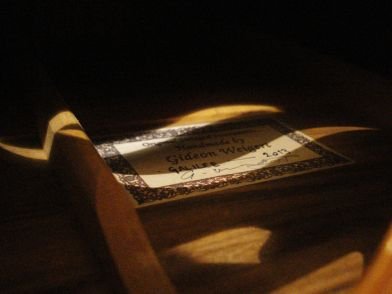.jpg)
A few years ago, I was commissioned to build a very unusual and interesting guitar for a Jazz guitarist in Switzerland. It was to have many special features, although for me the most interesting part was that it was to be built entirely from local and recycled wood.
For a luthier (guitar maker) with a conscience and an awareness of the environment, one of the real difficulties is in sourcing materials from reputable and responsible sources. This can be especially hard because many of the finest woods for making guitars, traditionally (at least since the 1800's) come from tropical rainforests and places where deforestation is carried out with no restrictions and no thought to conservation - and where the ancient forests are disappearing at an alarming rate.
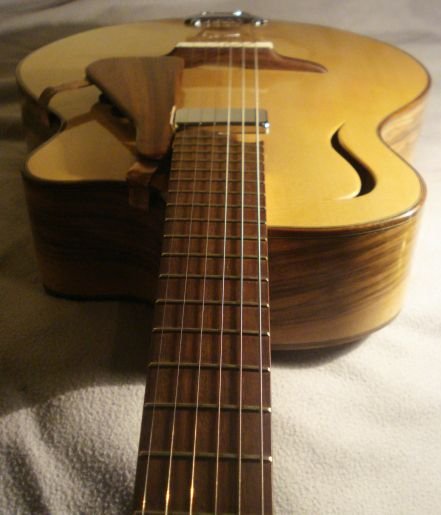
Many species of tree, such as Brazilian Rosewood, which comes from the Amazon, is now completely illegal to cut down. It's sale is restricted to wood from trees which were cut down over thirty years ago. Brazilian Rosewood is considered to be the finest tonewood that there is, and now a good set for the body of an acoustic guitar can cost thousands of dollars, although it is now becoming so rare that the quality isn't what it once was. (If I have any readers in South America, please look out for old doors, tables, wardrobes - even old roof beams and railway sleepers, made from Rosewood. Let me know if you come across any - these could be turned into guitars). Many other species are now also become more restricted, their sale and export carefully monitored and requiring certification that the trees were cut down responsibly and new trees were planted in their place. These include Rosewood from Bolivia, Madagascar and India, Mahogany and 'Spanish' Cedar from Honduras.
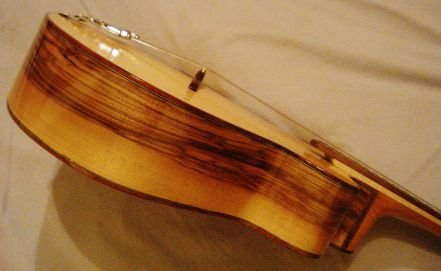
All of those woods compose a large part of traditional classical and acoustic guitars - including the body, the neck, the internal bars and linings, the decorative bindings, the fretboard (which is usually made from Rosewood or Ebony) and the bridge. Traditionally, the bridge saddle and the nut (the string spacer near the head) were made from ivory, but fortunately for elephants (and hopefully not too late) the sale of ivory is totally prohibited almost everywhere. Guitar players generally accept this and don't demand ivory saddles and nuts. If they do, it is actually possible to buy ivory from extinct woolly mammoths, which are uncovered from time to time. But most players will make do with using cow bone for those parts, or else some hard synthetic material.
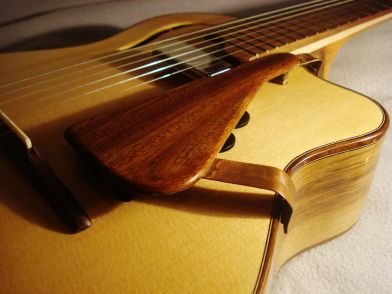
It's all about the sound. At the same time, the history of European Colonialism in the Far East, India, Africa and South America have a lot to do with it...
During the 1800's, when the modern classical and acoustic guitars were being developed by legendary luthiers Antonio de Torres of Spain and C.F Martin who came from Germany to the US, the European colonies were at full strength, ruling much of the newly discovered world and plundering its resources without any limit whatsoever.
Until then, musical instruments made in Europe were made from local woods, such as maple, spruce, walnut, cherry, apple, pear, holly and boxwood, among others. Violins are still made almost entirely from maple and spruce, because their design dates back to the 1600's. However, with the influx of new, exotic, dark hardwoods coming in from the colonies, these quickly became the most sought after and highly prized materials for new musical instruments.
.jpg)
It must be said, that the rosewoods are tonally and visually some of the best woods for making guitars. I like to use Indian Rosewood for guitar bodies as it does give a real depth of tone as well as being beautifully dark and able to take on a very fine, polished finish. I have one piece of Brazilian Rosewood, which someone gave me years ago, the size of a guitar fretboard. I still haven't used any of it for anything, but now and again I take it out and give it a tap, just to hear the sound it makes. It rings just like a bell. It's quite amazing. And it's full of all different colours from dark brown, through reds and orange, all in fractal, flowing lines along it's grain.
But at the same time, maple is one of my favourite woods too, both for its appearance (it's light coloured, golden when polished, and can have all sorts of fascinating figuring which catches the light in amazing ways) and for it's tone, which is clear and bright. I made several nice guitars from a Sycamore (a relative of Maple) tree from Sherwood Forest in England, near where I used to live in Nottinghamshire. Those trees are periodically cut down as part of the forest conservation there, so I got that for free. Likewise, a cherry tree outside my parents' house in London was cut down by the council after a neighbour complained of the roots growing under their lawn. It was a shame, because it was a very nice cherry tree, but I did manage to make a few instruments and parts of instruments from it, so I like to think that it lives on, in a way.
Traditional Flamenco guitar bodies are made from Cypress wood. The reason for this is that the Flamenco guitar is a folk instrument and the guitars played would have been made out of cheaper, local cypress wood, rather than the expensive imported Rosewood from the South American colonies. Cypress wood is one of my favourite woods to use, whicih is one of the reasons I like making traditional Flamenco guitars. It's light and easy to work with, as opposed to Rosewood, which is hard, heavy and it's dust is irritant and poisonous. It also gives a crisp, dry tone to the sound. But best of all is the wonderful, citrus-like smell that it has, which fills the workshop and never really leaves the finished guitar.
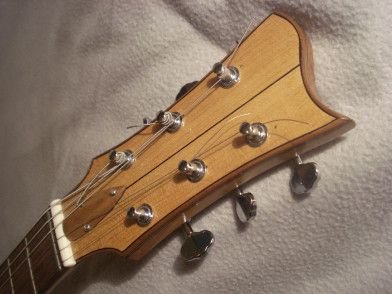
So, like I say, I was very pleased when a player came to me with the request that I build a guitar from non-tropical, local wood. Usually they don't, but here was someone who cared about trees and protecting the environment as much as I do, and who was also interested in experimenting with some very unusual design details.
These are the materials I chose to use for this guitar
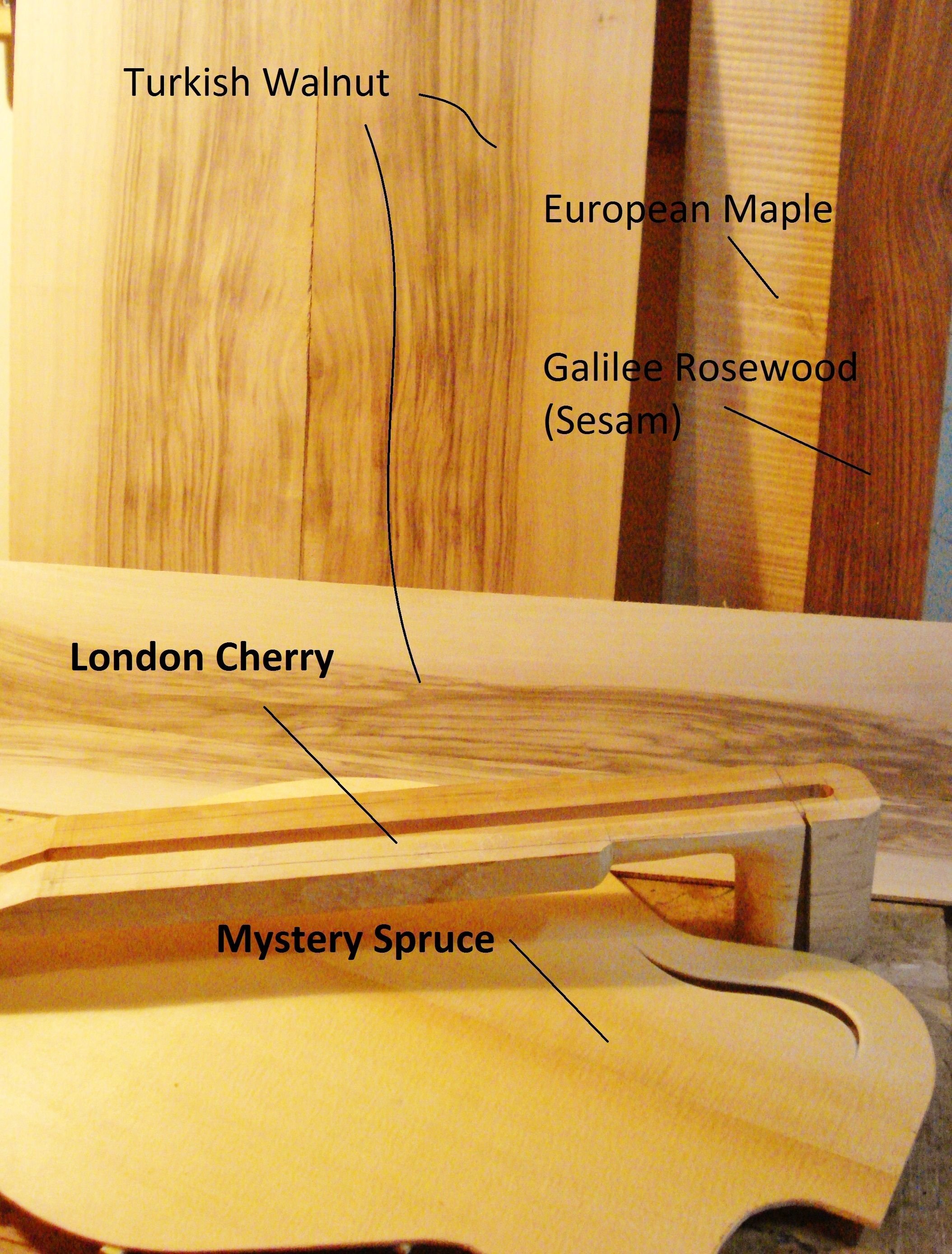
I'm going to write a series here on Steemit, detailing the design and the creation of this very special guitar. Here are some If you're interested in reading more about it, follow me @stillgideon , and check out the @ecotrain tag for updates on this and other interesting posts on wide a variety of topics.
